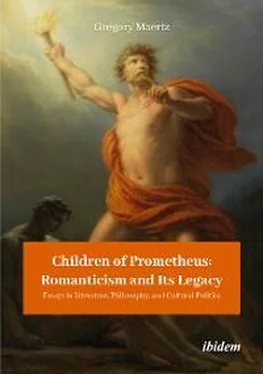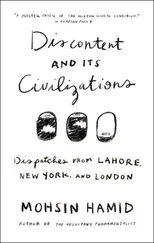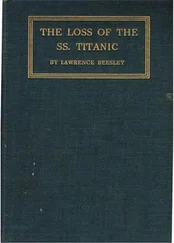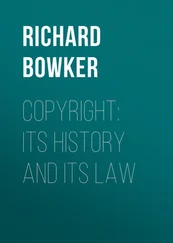Bakhtin used the term “novel” to denote “whatever force is at work within a given literary system to reveal the limits and the artificial constraints of that system.” According to this view, “literary systems are comprised of canons and novelization is fundamentally anticanonical.” 20This characterization applies to both St. Leon and Frankenstein , since each work is a militantly anti-canonical, composite literary form that explores the outer boundaries of the novel’s possibilities as a genre and combines, appropriates, and fuses other narrative sub-genres, including the Gothic, travel, and sentimental fiction. Bakhtin argues that the content and images of the novel are therefore “profoundly double-voiced and double-languaged” because they “seek to objectivize the struggle with all types of internally persuasive discourse that had at one time held sway over the author.” 21One such sub-genre exhibited in Frankenstein that illustrates this process is the Bildungsroman , in which the process of intertextual dialogue has been fused with the dialectic of education.
The composition of Frankenstein may, in fact, be compared to the manner in which children learn to appropriate adult speech for themselves and the means by which a writer distinguishes their voice from those of precursors and literary authority figures. The first process is analogous to translation in that it involves assimilation, rearrangement, a certain amount of necessary distortion, and simplification of the parental discourse adopted by the child as models in developing their own voice and speech patterns. Lotman describes language acquisition as a mediating process combining translation, appropriation, and reconfiguration:
The child’s contact with the world of adults is constantly imposed on him by the subordinated position of his world in the general hierarchy of the culture of adults. However, this contact itself is possible only as an act of translation. How can such translation be accomplished? . . . [T]he child establishes a correspondence between some texts familiar and comprehensible to him in “his” language and the texts of “adults” . . . . In such a translation—of one whole text by another whole text—the child discovers an extraordinary abundance of “superfluous” words in “adult” texts. The act of translation is accompanied by a semantic reduction of the text . . . . The child reduces the semantic model obtained from [the language of adults] in such a way that translation into his own language of the texts flowing from without is possible. 22
The child’s mediation of adult discourse thus may be likened to the reception of literary texts belonging to a foreign culture. In Les voix du silence (1951) André Malraux describes the process of cultural interaction in terms of a “conquest,” an “annexation,” a “possession” of the “foreign,” of that which is culturally “other,” and Bakhtin characterizes the impact of another’s discourse upon the writer as a dialectical opposition between the self and the other involving, first, the recognition of difference that is then followed by the struggle for individuation or originality:
When someone else’s ideological discourse is internally persuasive for us and acknowledged by us, entirely different possibilities open up. Such discourse is of decisive significance in the evolution of an individual’s consciousness: consciousness awakens to independent ideological life precisely in a world of alien discourses surrounding it, and from which it cannot initially separate itself . . . . One’s own discourse is gradually and slowly wrought out of other’s words that have been acknowledged and assimilated, and the boundaries are at first scarcely perceptible . . . . When such influences are laid bare, the half-concealed life lived by another’s discourse is revealed within the new context of the given author. When an influence is deep and productive, there is no external imitation, no simple act of reproduction but rather a further creative development of another’s discourse in a new context and under new conditions. 23
In its mythical treatment of the necessity to struggle against even the most beloved presence in one’s life, Mary Shelley’s novel also reflects the centrality to Romanticism of Germaine de Staël’s maxim: “Force of mind is developed only by attacking power.”
The Monster’s acquisition of speech, reading skills, and, most importantly, the capacity to generate texts symbolically, replicates Mary’s education as a struggle with another’s, more powerful discourse. Within her narrative this process approximates the Lotman / Bakhtin paradigm according to which the Monster learns, first, by appropriating the discourse of the De Lacey family and of the books he finds in the “leathern portmanteau”: Milton, Plutarch, and Goethe, and, secondly, in articulating its own individuated discourse. 24In the Godwin household the categories of parents and authors were conflated, and the circle of family friends included prominent literary and cultural figures who were familiar to the children. 25Mary’s, and by extension, the Monster’s obsession with language reflects their shared struggle to gain command of a medium in which to express their own thoughts in the midst of many authoritative models of discourse: “By degrees I made a discovery of still greater moment: I found that these people possessed a method of communicating their experience and feelings to one another by articulate sounds . . . . This was indeed a godlike science, and I ardently desired to become acquainted with it.” (83) There is a remarkable parallel between the Monster’s language acquisition through a process of eavesdropping on the De Laceys and the famous anecdote of Mary and the other Godwin children hiding behind the sofa in order to hear Coleridge’s reading of the “The Rime of the Ancient Mariner.” How many countless times was this scene replicated over the years during visits by Wordsworth, Lamb, and Holcroft ? An interesting irony disclosed in the dialogic process is how the Monster acquires and demonstrates a command over language that far surpasses the eloquence of any other figure in the novel. Indeed, the source of his eventual domination of Victor is not his superhuman strength, but his greater rhetorical power. It is also an irony of literary history that in securing her authorial identity with the endurance of Frankenstein Mary surpassed the success enjoyed by St. Leon , her primary precursor text, which Byron considered superior to Caleb Williams . And while Frankenstein continues to generate countless literary and cinematic spinoffs at a dizzying rate, Godwin’s novel, until recently, was only available in an antiquarian reprint.
A further instance of Mary’s identification with the Monster is found in their similar responses to maternal deprivation. Victor and Reginald are also motherless, and for both this loss is exacerbated by the deaths of other loved ones. Anne Mellor has described Frankenstein as “an analysis of the failure of the family, the damage wrought when the mother—or a nurturant parental love—is absent.” 26This is also the central theme of St. Leon , which is, as already suggested, a transparent redaction of the Godwin family experience, and Mary’s treatment of the orphan’s agony of the Monster illustrates Sigmund Freud’s view that “missing someone who is loved and longed for is the key to an understanding of anxiety.” 27John Bowlby, the English psychologist and biographer of Charles Darwin, modifies Freud’s observations on grief and separation anxiety to suggest a possible cause of Mary’s frequent bouts of anxiety during her many pregnancies:
States of anxiety and depression that occur during adult years, and also psychopathic conditions, can, it is held, be linked in a systematic way to the states of anxiety, despair, and detachment . . . that are so readily engendered whenever a young child is separated for long from his mother figure, whenever he expects a separation, and when, as sometimes happens, he loses her altogether. 28
Читать дальше












